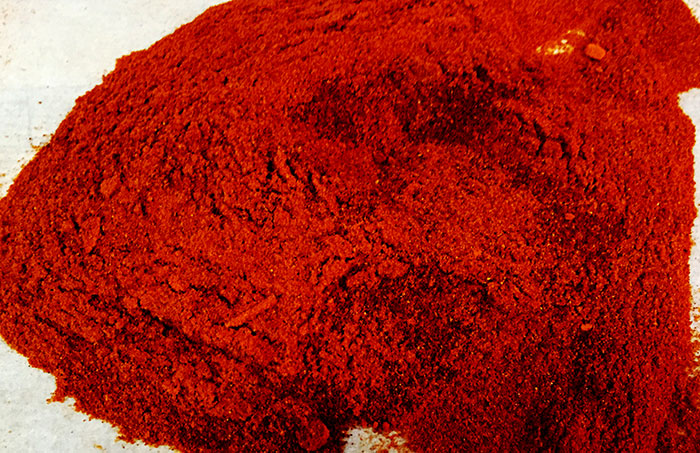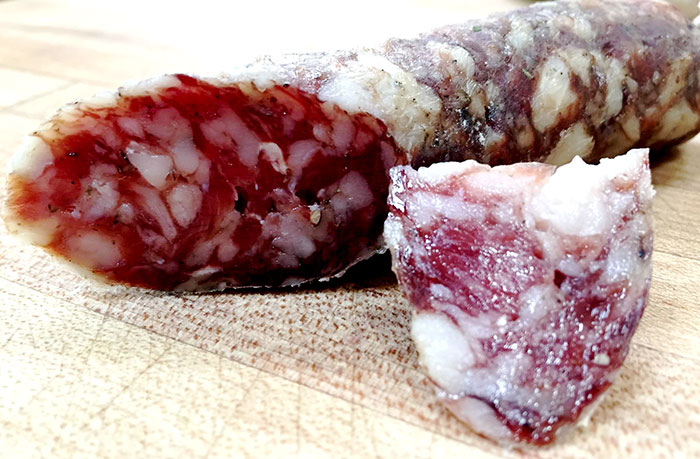More Than a Garnish
Deep in your cabinets, lost and forgotten behind the garlic powder, dried marjoram, and bay leaves, there likely sits in wait an unappreciated and underutilized spice. Vibrantly colored in shades ranging from Valencia orange to sunset red, and bursting with flavors of bell pepper and smoky oak, paprika is so much more than a garnish for deviled eggs and potato salad.

Paprika, the result of dried pimiento peppers, originated in Southern Mexico, Central America, and the Caribbean Islands. Beyond the sweet and mild pepper’s palatability, the native gatherers of these peppers were infatuated with the healing (anesthetic, analgesic and antiseptic) and dyeing properties of the natural resource. When King Ferdinand and Queen Isabella financed the exploration of the West Indies, Europe’s idolization of faraway spices was solidified. It is said, the baroque gardens of nobility were adorned with pimiento pepper plants. Trade routes across Europe and Asia facilitated the widespread adoration of the spice. Over centuries of culinary evolution, paprika has become a staple in both Spanish and Hungarian cooking. Hungarian goulash and Spanish chorizo are celebrations of the nations’ prized spice.
In Spain and Hungary, the harvest of peppers begins every September 8th, coinciding with the Feast of the Nativity of the Holy Virgin, entire farming families harvesting the little peppers from their cultivated fields, and staging them in drying houses. In Hungary the peppers are woven in lavish bundles, hung from the rafters, and air dried in warm cottages. In Spain, the peppers are meticulously arranged in wood and brick smokehouses and smoked with oak wood. No other wood may be used if the genuine Spanish paprika is to have its typical flavor, and every day for two weeks, the layers of peppers are turned over by hand. In both locales, the peppers are milled by stone wheels, turned slowly to avoid the altering affects of friction on color and flavor.
Spanish paprika is blended in three distinct flavors: Picante (spicy) is the result of the spiciest Jeromin peppers; gridulce (bittersweet) is made from the mild flavored and electric red Jaranda and Jariza peppers; and, Dulce (sweet) is a combination of the sweet Bola peppers and the brilliantly red Jaranda peppers. Hungarian papkrika is also graded by varying degrees of richness, pungency, spice, and color. Eight classifications of paprika have been established in Hungary, but it is rare to find all but one outside of the region: édesnemes (“noble sweet) is a slightly pungent, vibrantly red, and mildly spiced variety classically marketed as Hungarian sweet paprika.
The distinct flavors of paprika are far reaching. Some are highlighted by earthiness and sweet tomato with nutty undertones. Others prick the palate with spice and flood the senses with smoked oak. The culinary experiences are nearly endless. Consider a pinch to your stews and chilies, or a dash in your meat rubs. Or, if you are in an especially experimental and motivated mood try Oak Avenue Catering’s homemade Spanish chorizo recipe, perfected by Chef Shannon Kelly.
Dry Spanish Chorizo (makes 15 pounds)
A dried chorizo can be made using any combination of lean meats, or for authenticity’s sake use 85% pork butt and 15% pork back fat.

Cut meat and back fat in to approximately 1” sized cubes. Toss meat in spices and dextrose. Chill cubes to a near freezing temperature (32-36°F). Grind par-frozen meat and spices through ½”grinder plate. Transport to a container and pack well to avoid air pockets. Cure overnight at 34-36°F.
Rinse casings very well in room temperature water. Grind meat a second time through a ¼” plate. This will allow for easier stuffing into a 35-38mm hog casing. Before stuffing, using a paddle, mix Bactoform solution with ground meat. Stuff in to casings and tie off.
Weigh sausages to establish the “Green Weight”. Hang stuffed sausages 1-2 inches apart, and ferment for 72 hours at 70-75°F with 70-80% humidity. Then, space sausages 3-4 inches apart and dry for 18-20 days at 50-55°F with 60-70% humidity. The end weight should be 30 to as much as 50% of the “Green Weight”.
For long term storage, chorizo may be placed into air-tight containers and preserved in lard.
Ingredients:
- 6 Tbsp Smoked Paprika
- 6 Tbsp Granulated Garlic
- 6 Tbsp Ancho Chili Powder
- 5 ½ tsp Cayenne Pepper
- ¾ Cup Non-Iodized Salt
- 3 Tbsp Dextrose
- 1 Tablespoon Insta Cure #2
- ¾ Cup Bactoform dissolved in ¾ Cup Water (room temperature non-chlorinated
Side Note:
For a fresh chorizo or sobrassada, omit the Insta Cure #2 and skip the 18-20 days of drying. The end result is a spreadable sausage delicious on toasted bread with a drizzle of honey.
